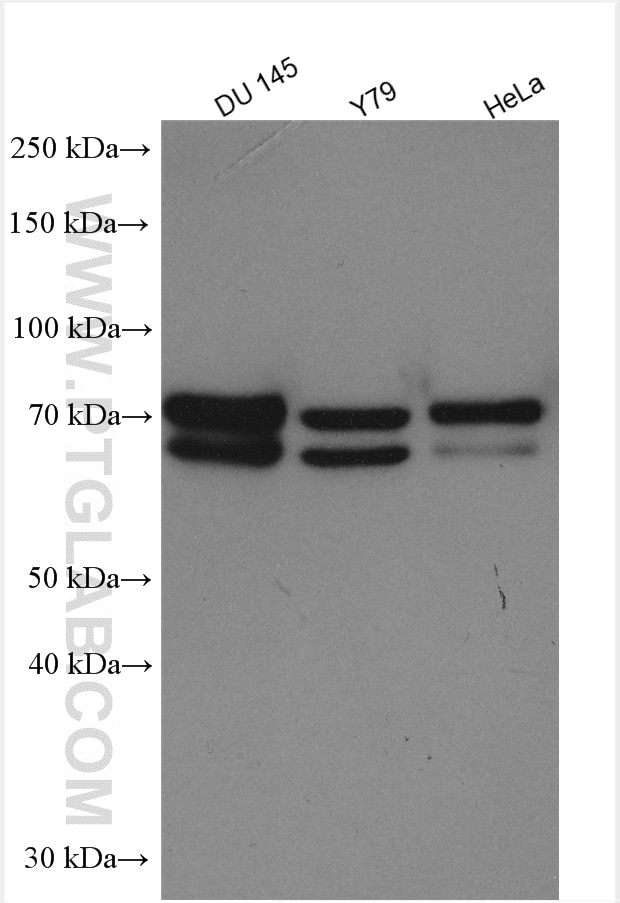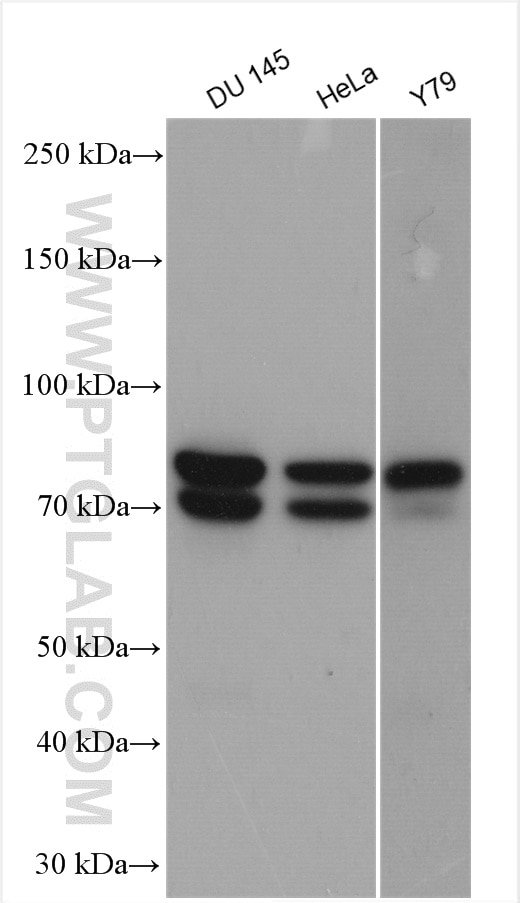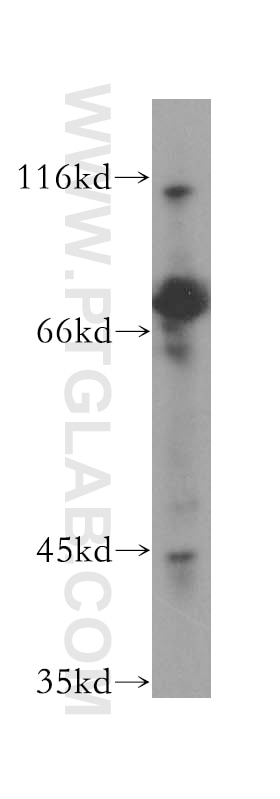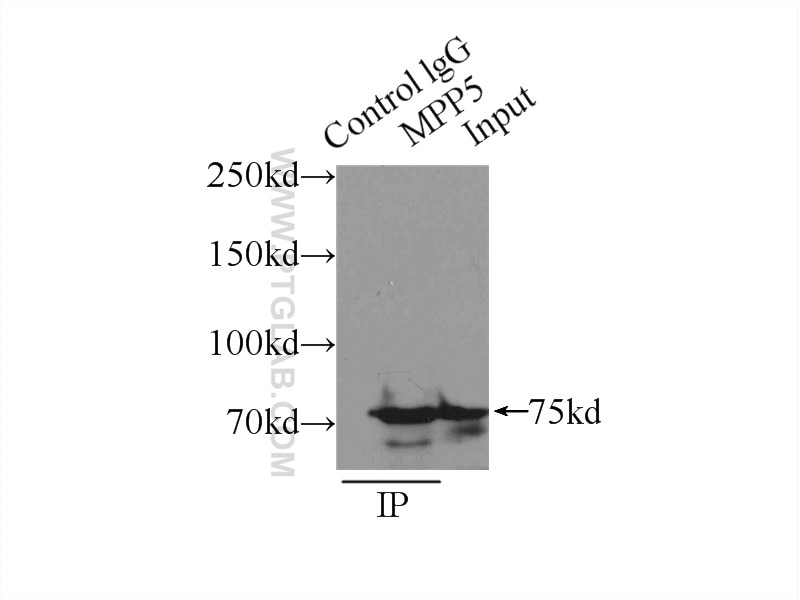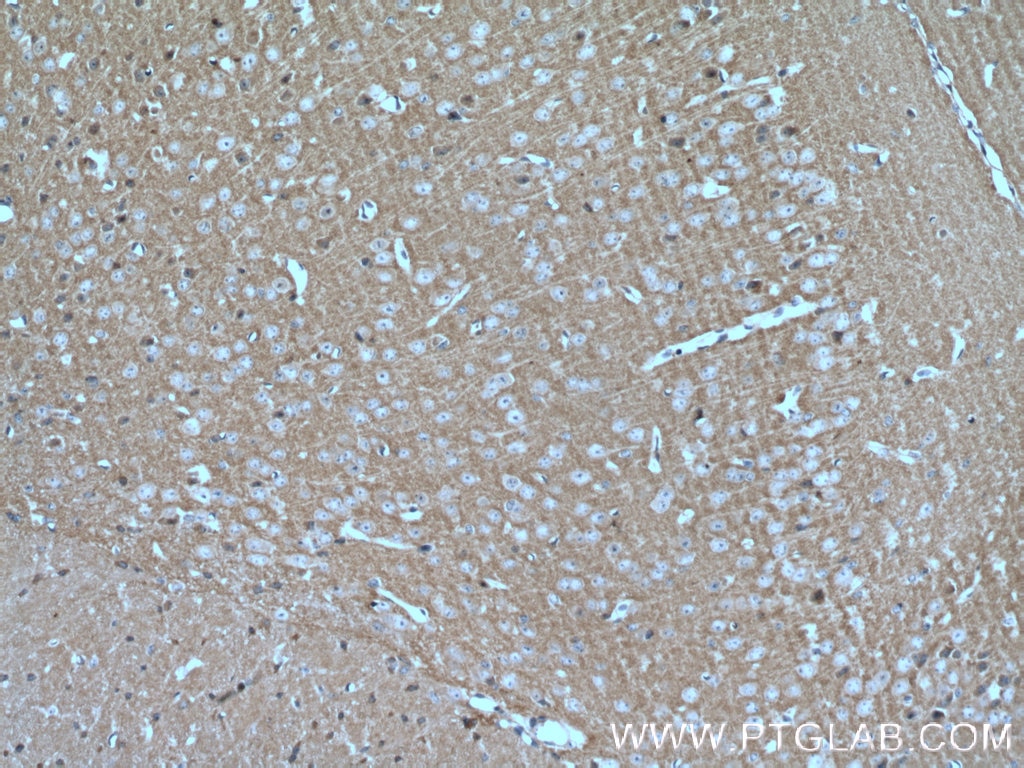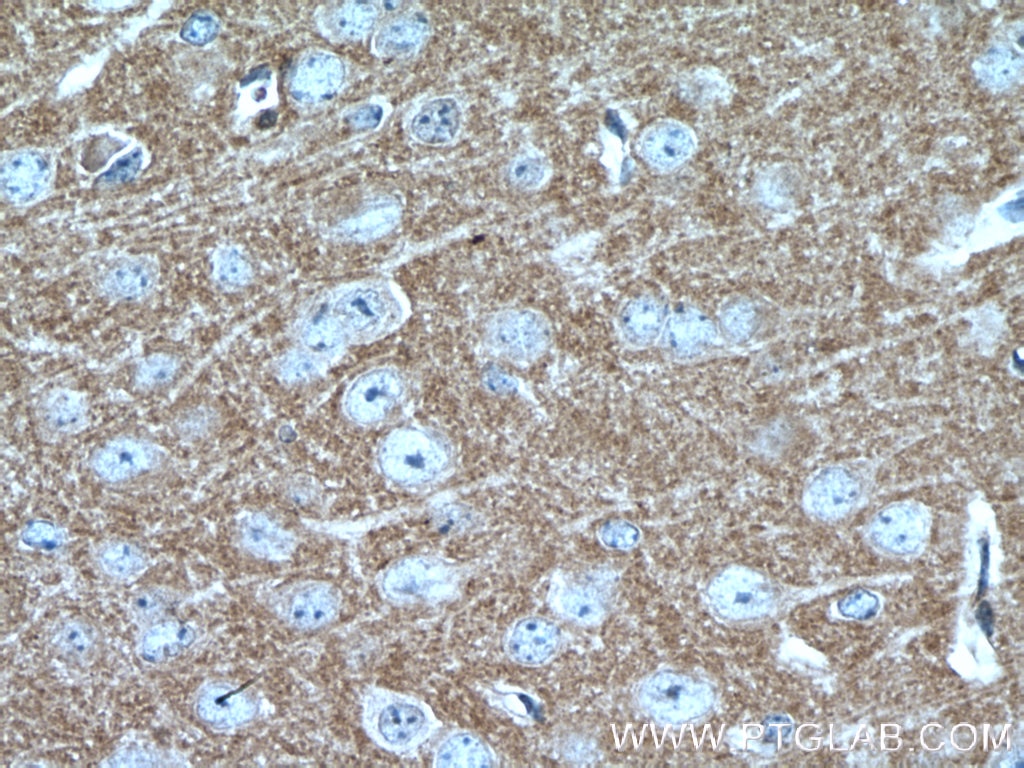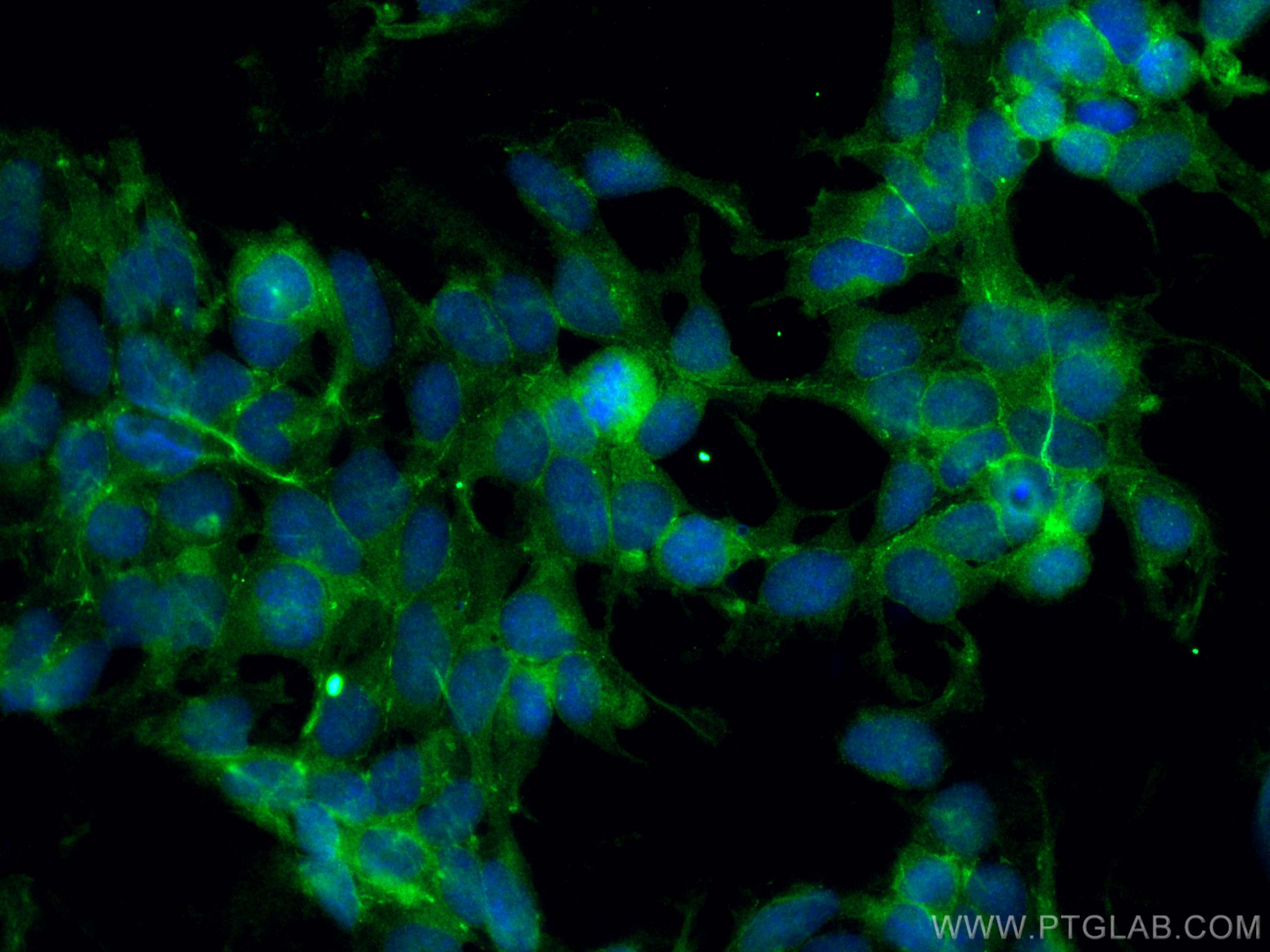- Phare
- Validé par KD/KO
Anticorps Polyclonal de lapin anti-MPP5
MPP5 Polyclonal Antibody for WB, IHC, IF/ICC, IP, ELISA
Hôte / Isotype
Lapin / IgG
Réactivité testée
Humain, rat, souris
Applications
WB, IHC, IF/ICC, IP, ELISA
Conjugaison
Non conjugué
N° de cat : 17710-1-AP
Synonymes
Galerie de données de validation
Applications testées
| Résultats positifs en WB | cellules DU 145, cellules HeLa, cellules Y79, tissu cérébral humain |
| Résultats positifs en IP | tissu cérébral de souris |
| Résultats positifs en IHC | tissu cérébral de souris, il est suggéré de démasquer l'antigène avec un tampon de TE buffer pH 9.0; (*) À défaut, 'le démasquage de l'antigène peut être 'effectué avec un tampon citrate pH 6,0. |
| Résultats positifs en IF/ICC | cellules HEK-293, |
Dilution recommandée
| Application | Dilution |
|---|---|
| Western Blot (WB) | WB : 1:2000-1:10000 |
| Immunoprécipitation (IP) | IP : 0.5-4.0 ug for 1.0-3.0 mg of total protein lysate |
| Immunohistochimie (IHC) | IHC : 1:50-1:500 |
| Immunofluorescence (IF)/ICC | IF/ICC : 1:200-1:800 |
| It is recommended that this reagent should be titrated in each testing system to obtain optimal results. | |
| Sample-dependent, check data in validation data gallery | |
Applications publiées
| KD/KO | See 2 publications below |
| WB | See 6 publications below |
| IHC | See 7 publications below |
| IF | See 17 publications below |
| IP | See 1 publications below |
Informations sur le produit
17710-1-AP cible MPP5 dans les applications de WB, IHC, IF/ICC, IP, ELISA et montre une réactivité avec des échantillons Humain, rat, souris
| Réactivité | Humain, rat, souris |
| Réactivité citée | Humain, souris |
| Hôte / Isotype | Lapin / IgG |
| Clonalité | Polyclonal |
| Type | Anticorps |
| Immunogène | MPP5 Protéine recombinante Ag12010 |
| Nom complet | membrane protein, palmitoylated 5 (MAGUK p55 subfamily member 5) |
| Masse moléculaire calculée | 675 aa, 77 kDa |
| Poids moléculaire observé | 70-80 kDa |
| Numéro d’acquisition GenBank | BC095485 |
| Symbole du gène | MPP5 |
| Identification du gène (NCBI) | 64398 |
| Conjugaison | Non conjugué |
| Forme | Liquide |
| Méthode de purification | Purification par affinité contre l'antigène |
| Tampon de stockage | PBS with 0.02% sodium azide and 50% glycerol |
| Conditions de stockage | Stocker à -20°C. Stable pendant un an après l'expédition. L'aliquotage n'est pas nécessaire pour le stockage à -20oC Les 20ul contiennent 0,1% de BSA. |
Informations générales
MPP5, also named as PALS1, belongs to the MAGUK family which interact with the cytoskeleton and regulate cell proliferation, signaling pathways, and intracellular junctions. MPP5 is thought to organize intracellular PALS1-CRB-MUPP1 protein scaffolds in the retina that are involved in maintenance of photoreceptor-Mu¨ller glia cell adhesion. MPP5 plays a role in tight junctions biogenesis and in the establishment of cell polarity in epithelial cells.
Protocole
| Product Specific Protocols | |
|---|---|
| WB protocol for MPP5 antibody 17710-1-AP | Download protocol |
| IHC protocol for MPP5 antibody 17710-1-AP | Download protocol |
| IF protocol for MPP5 antibody 17710-1-AP | Download protocol |
| IP protocol for MPP5 antibody 17710-1-AP | Download protocol |
| Standard Protocols | |
|---|---|
| Click here to view our Standard Protocols |
Publications
| Species | Application | Title |
|---|---|---|
Neuron Microcephaly Proteins Wdr62 and Aspm Define a Mother Centriole Complex Regulating Centriole Biogenesis, Apical Complex, and Cell Fate. | ||
Neuron Mosaic Analysis with Double Markers Reveals Distinct Sequential Functions of Lgl1 in Neural Stem Cells. | ||
Dev Cell Multicellular rosettes link mesenchymal-epithelial transition to radial intercalation in the mouse axial mesoderm | ||
Cell Death Differ The evolutionary history of the polyQ tract in huntingtin sheds light on its functional pro-neural activities. | ||
J Am Soc Nephrol Crumbs2 Is an Essential Slit Diaphragm Protein of the Renal Filtration Barrier. |
